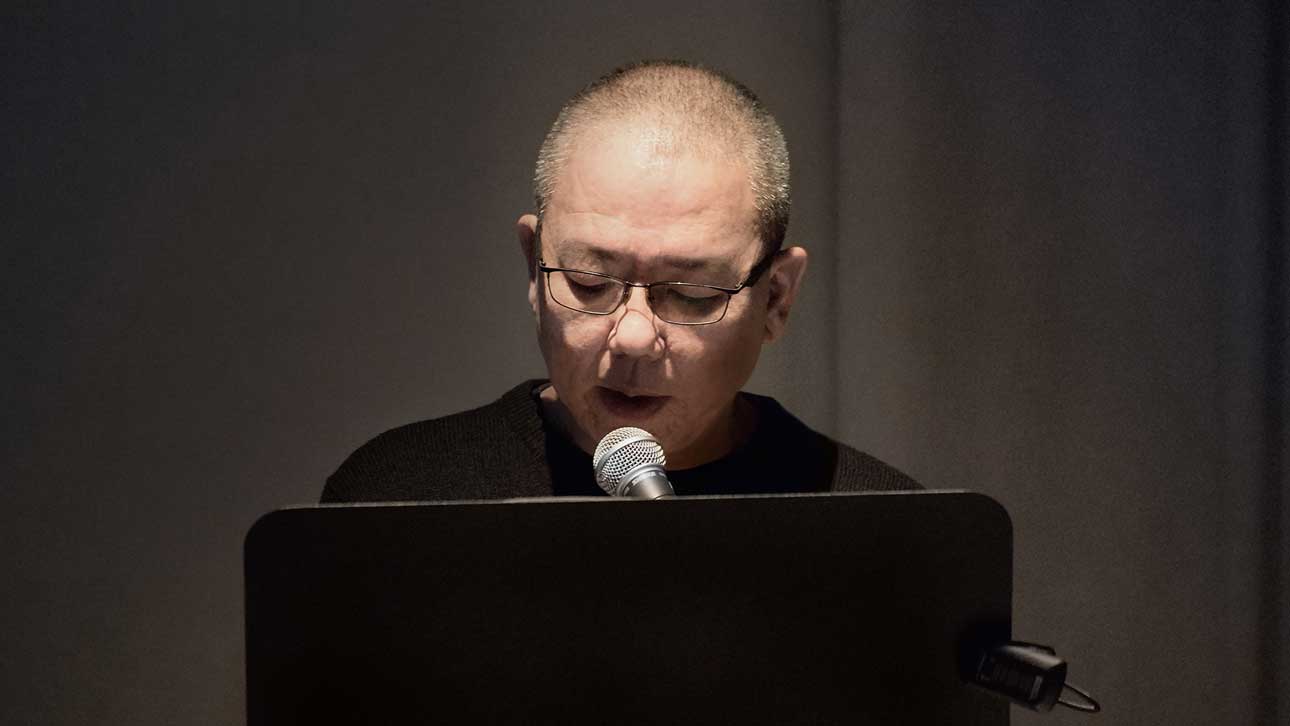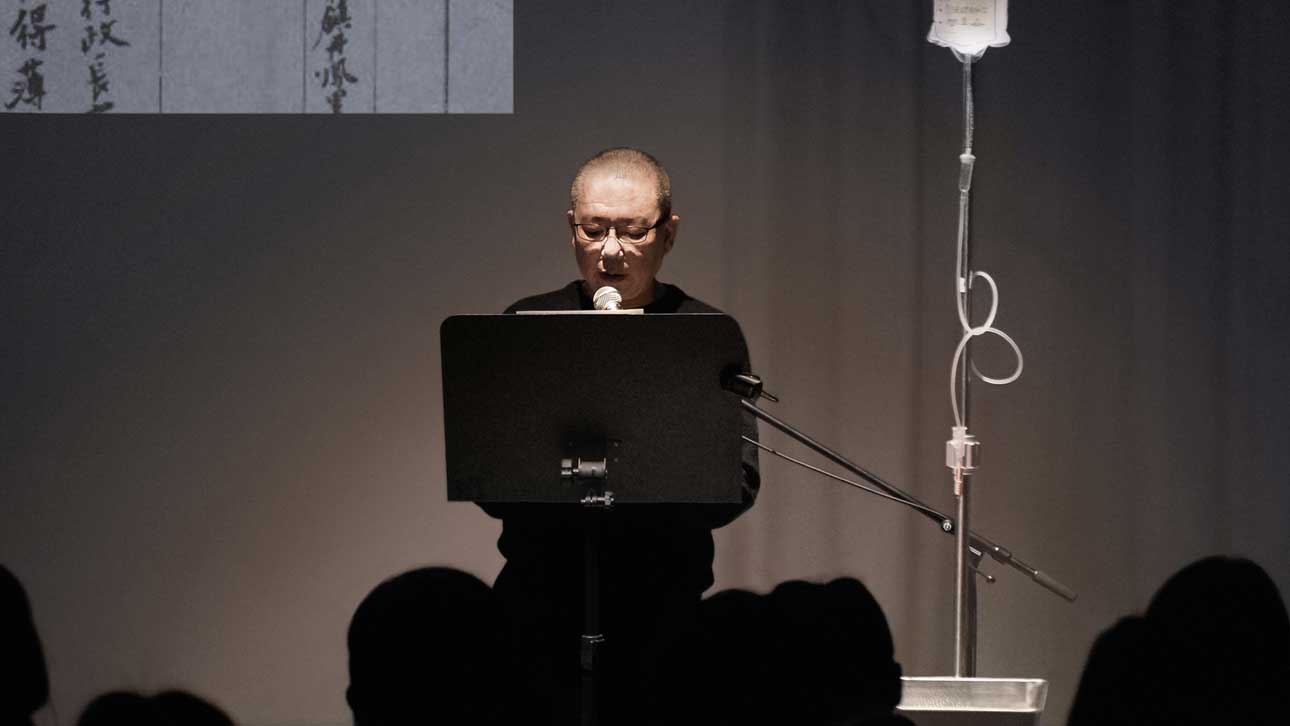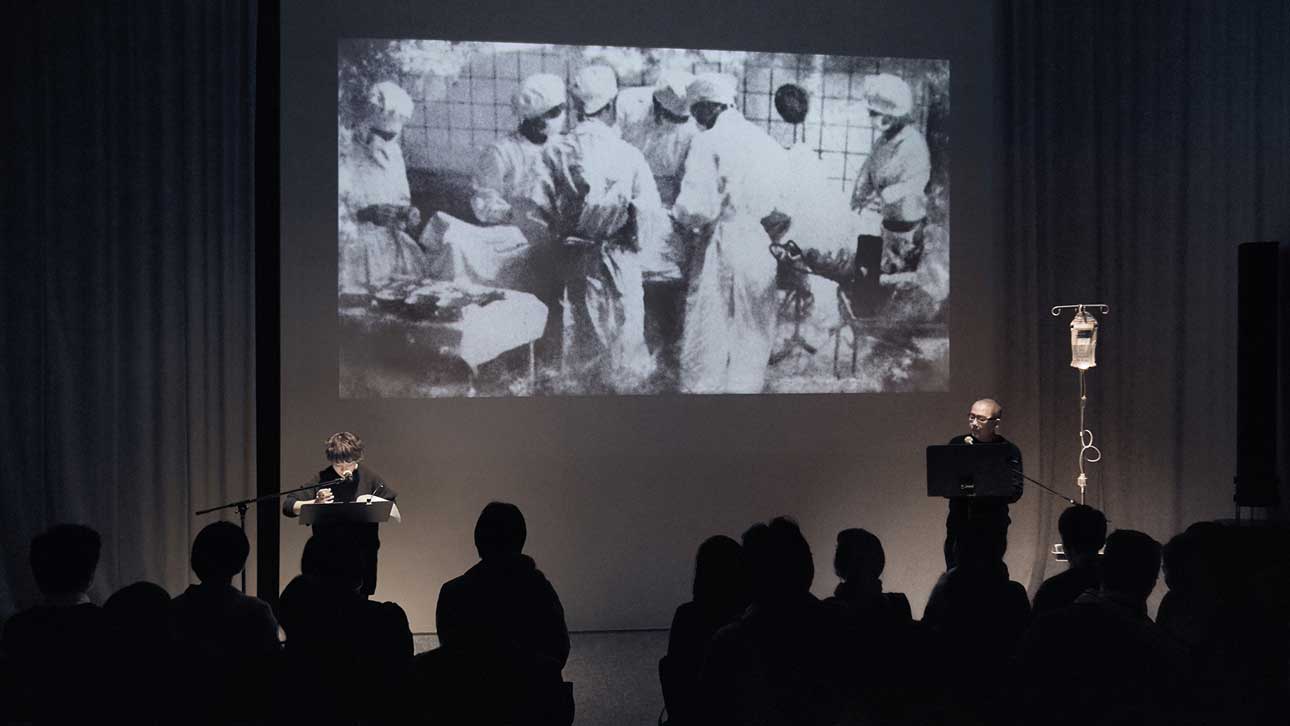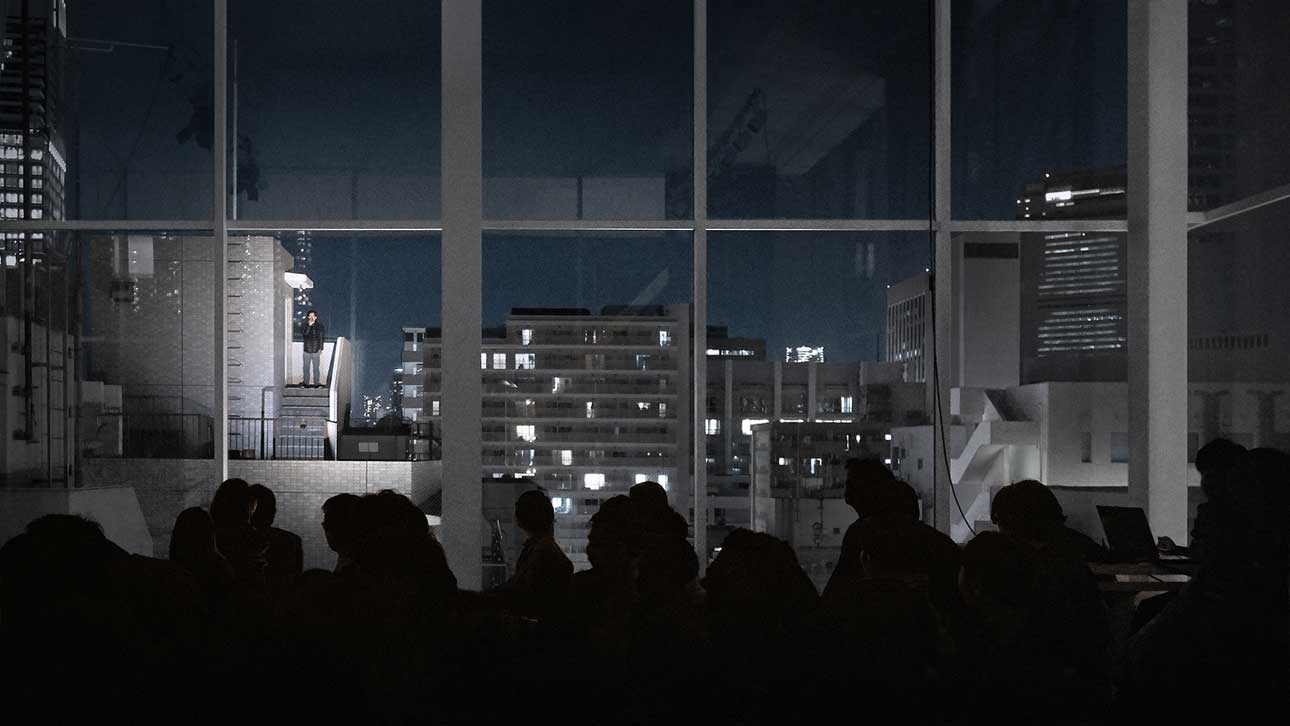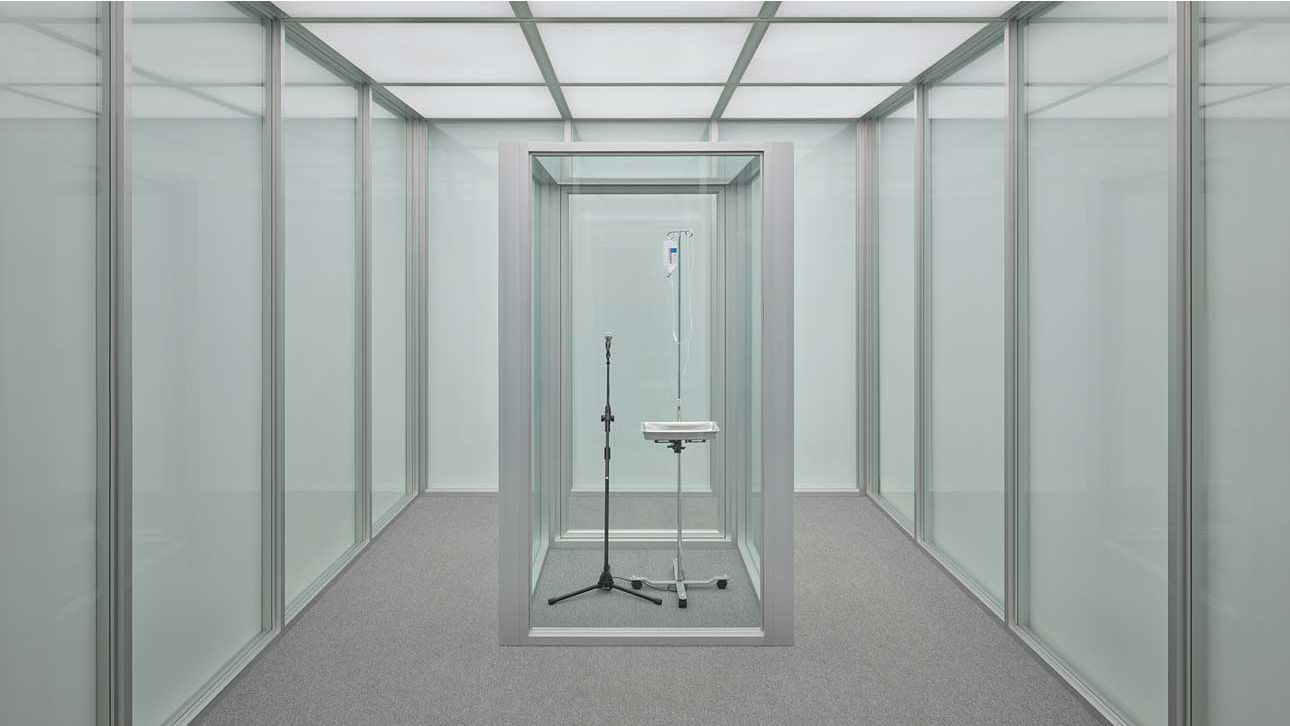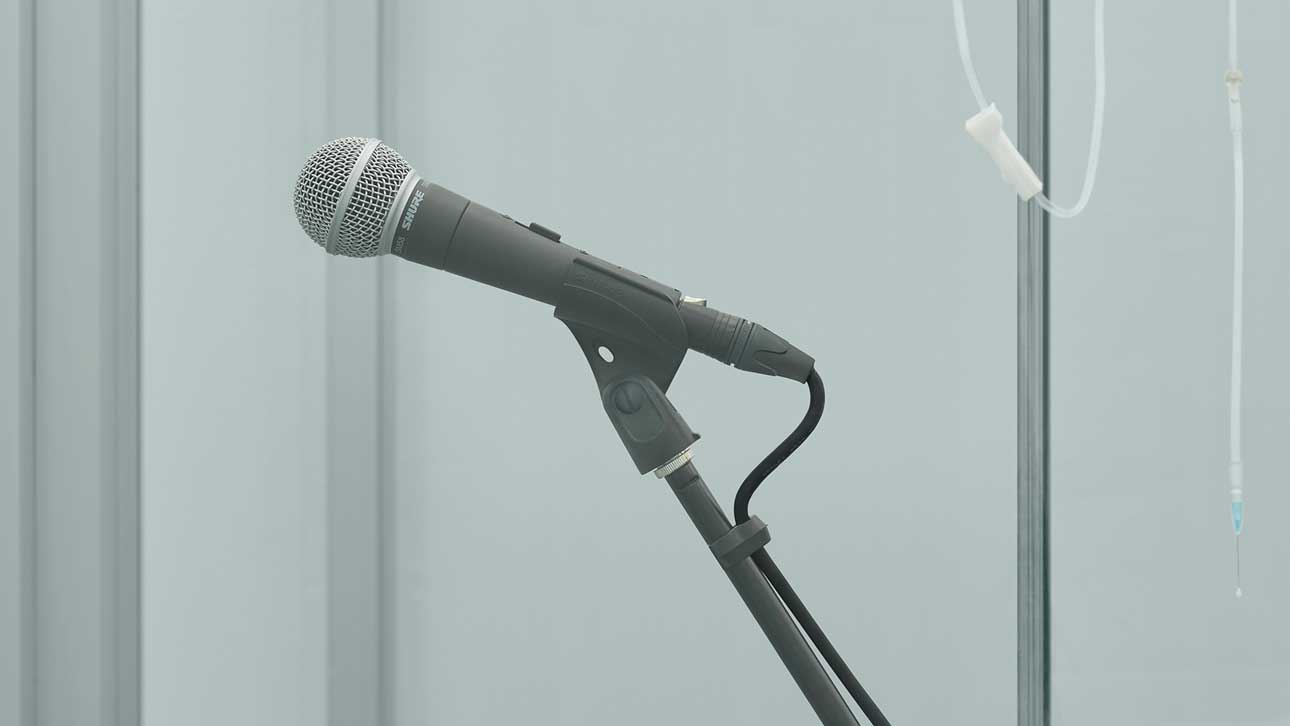Dissenting Voices of the Unwashed, Disobedient, Non-Citizens, and Exiles in Their Own Homes
2016
lecture performance.sound installation
Introduction
On February 16, 2016, Chen Chieh-jen gave lecture performances on three consecutive nights at Tokyo’s Shibaura House upon the invitation of Arts Commons Tokyo. Topics in his lecture included contributions by the Losheng Sanatorium and the Losheng Preservation Movement to a growing discourse on the evolutionary history of colonial modernity; reflections on the internal paradox of evolving citizens’ movements under fourth wave colonial modernization; and the construction of a new Losheng Sanatorium without walls in contemporary society by ruthless policies of dispatched labor.(1)
Chen introduced sounds into the lecture-performance venue, specifically water dripping into a stainless steel pan and a hypnotic, monotonous tone. He briefly introduced the histories of the Losheng Sanatorium and the Losheng Preservation Movement. He then explained how, after the Losheng Preservation Movement reached its peak, he was called by random events to the remains of the Sanatorium even though he had never been involved in the movement and could never have had experienced the physical suffering of Hansen’s disease. Next, he talked about the gradual turn of his attention to things of unclear significance, the ineffable states of the silent Sanatorium residents, foreign construction workers, and foreign nurses as he wandered through the remains of the Sanatorium, MRT depot construction site, temporary resident housing and hospital.
He then discussed how he added information from historical records to certain affecting events he had witnessed while wandering in these places to examine his own thinking. The Losheng Sanatorium was established during the Japanese colonial period to house Hansen’s disease sufferers, and in this real administered space, residents were quarantined, prohibited from marrying, and sterilized in the name of modern colonial civilization. Chen then asked what visible and invisible administration technologies are being used under global neoliberalism and neocolonialism by those in power to create the unwashed, disobedient, non-citizens and those exiled in their own homes, and thus leading to a new Losheng Sanatorium without walls?
At the end of the lecture performance, curtains surrounding the space were slowly opened and Chen invited the audience to newly look at the familiar Tokyo cityscape at night. On the roof of a neighboring building on this bitter cold winter night, a dispatch worker, about 30 years old, was giving an account of the various part-time jobs he had worked since he was 18 using a wireless microphone.(2) A perfectly clean piece of glass stood between the worker and the audience, suggesting the administrative techniques used to segregate society. Like a glass ceiling, the window suggests invisible barriers to social mobility.
In September of the same year, Chen transformed this performance into a sound installation and presented it with his video works Realm of Reverberations and Wind Songs at the Taipei Biennial under the series title Realm of Reverberations.
The installation consists of a brightly lit space constructed of transparent glass. In the space, a recording is playing of Chen reading the manuscript from his February 16 lecture-performance in a low voice, and a similarly constructed glass booth suggesting a lecture room stands in the center. Inside this sealed lecture room, a microphone and intravenous drip are installed. When curious visitors carelessly open the door of the lecture room, ear-splitting feedback immediately escapes and alters the prerecorded lecture. This instant is a poetic and dialectical response to the last sentence of Chen’s lecture: “Are we the builders of this invisible sanatorium? Or are we the quarantined? Perhaps we are both.” The sound of feedback, which is not language and is accidentally produced by a visitor, indicates that an additional choice beyond “both” is possible.
Notes
- Japanese translation of the Chinese transcript and on-site interpretation for the lecture performance was provided by Ikeda Lily Chenran. Proofreading and translation assistance was provided by Youth Alliance for Losheng members Luo Hao-ming and Chang Chien-yuan. Photographer: Masahiro Hasunuma ©Arts Commons Tokyo.
- From 1985 to 2015, Japan had nearly 20 million dispatch workers. The dispatch worker at this lecture performance was Sho Nakato, who was born in 1986 after Japan’s Worker Dispatch Law was passed.

